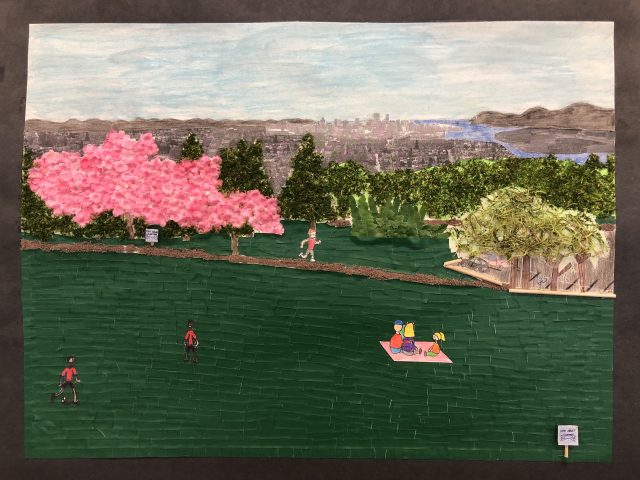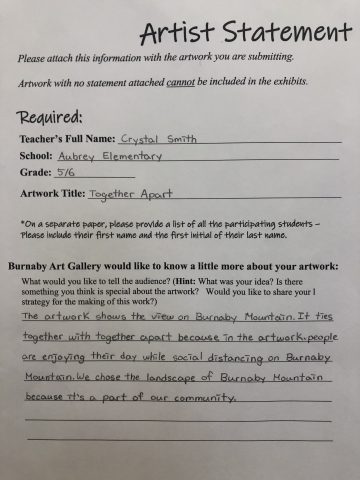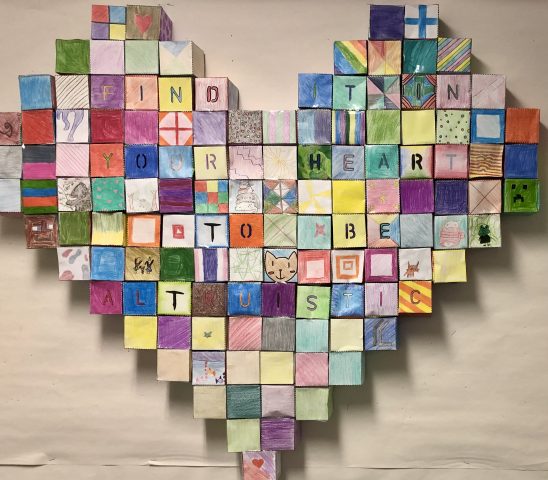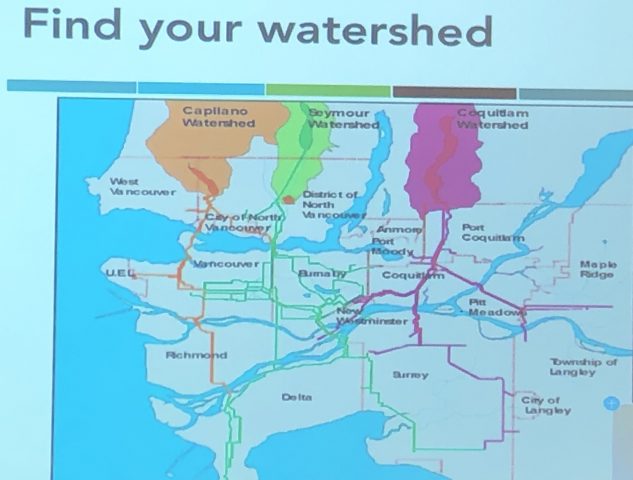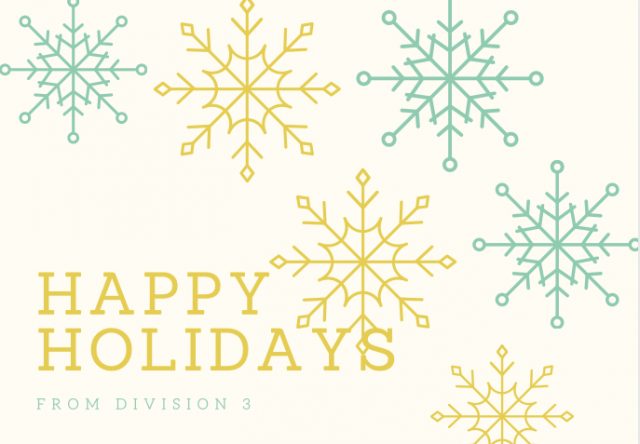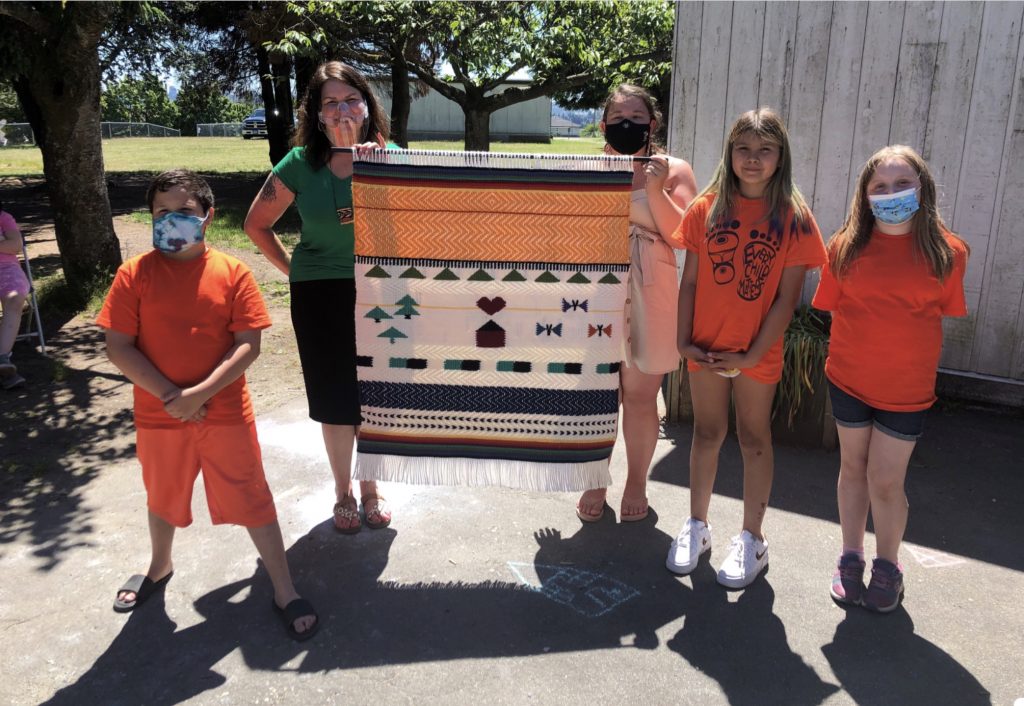
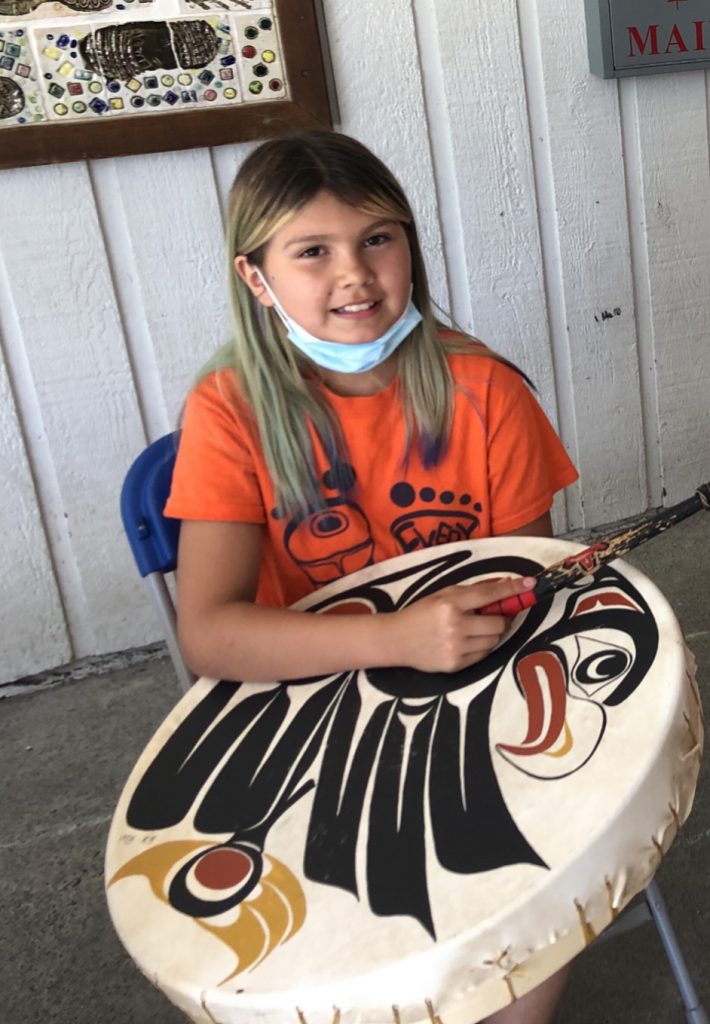 What a wonderful way for us to mark National Indigenous Peoples Day! Last year, we embarked on a weaving project with Coast Salish weavers Angela George and her apprentice Caitlin. They led us through a process where together we brainstormed our school values. Words such as kind, caring, our natural environment and the weaving of our French and English program were all ideas that were woven into the loom.
What a wonderful way for us to mark National Indigenous Peoples Day! Last year, we embarked on a weaving project with Coast Salish weavers Angela George and her apprentice Caitlin. They led us through a process where together we brainstormed our school values. Words such as kind, caring, our natural environment and the weaving of our French and English program were all ideas that were woven into the loom.
This weaving will hang proudly in our main foyer. We will revisit this with all of our students in the coming school year.
Special thanks to Alivia, Breton and Aaliya from Div 7 who received the weaving on behalf of our Aubrey community. Additionally, we thank our kindergarten children who so beautifully sang the Coast Salish Anthem with the arrival of the weaving.
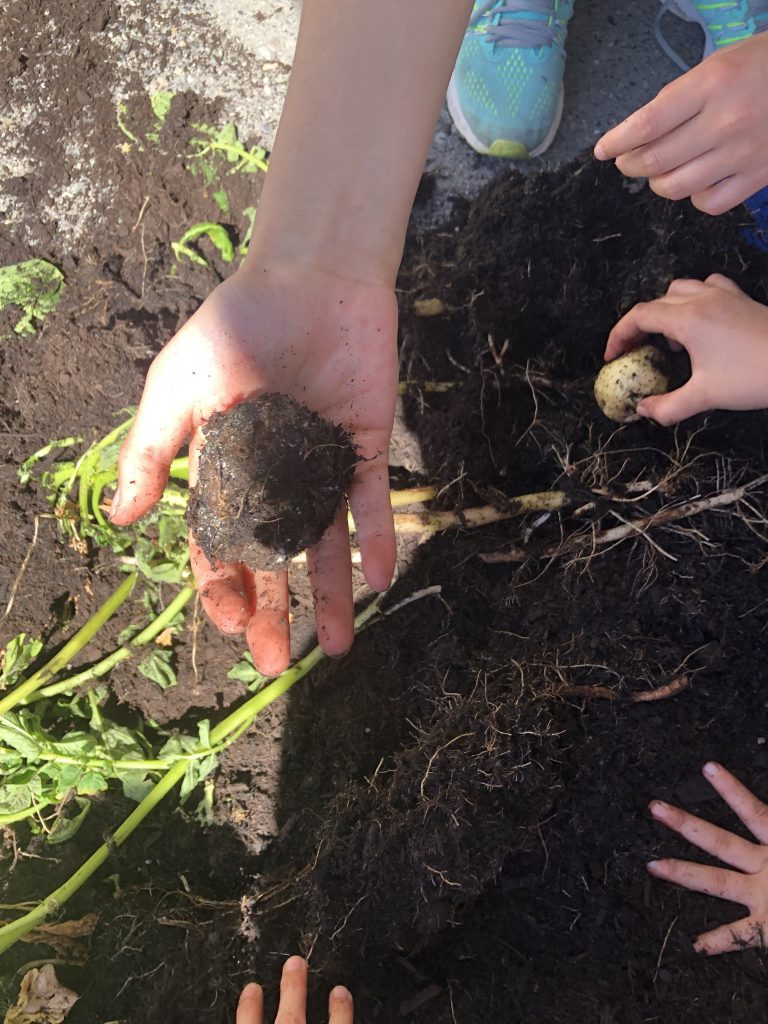
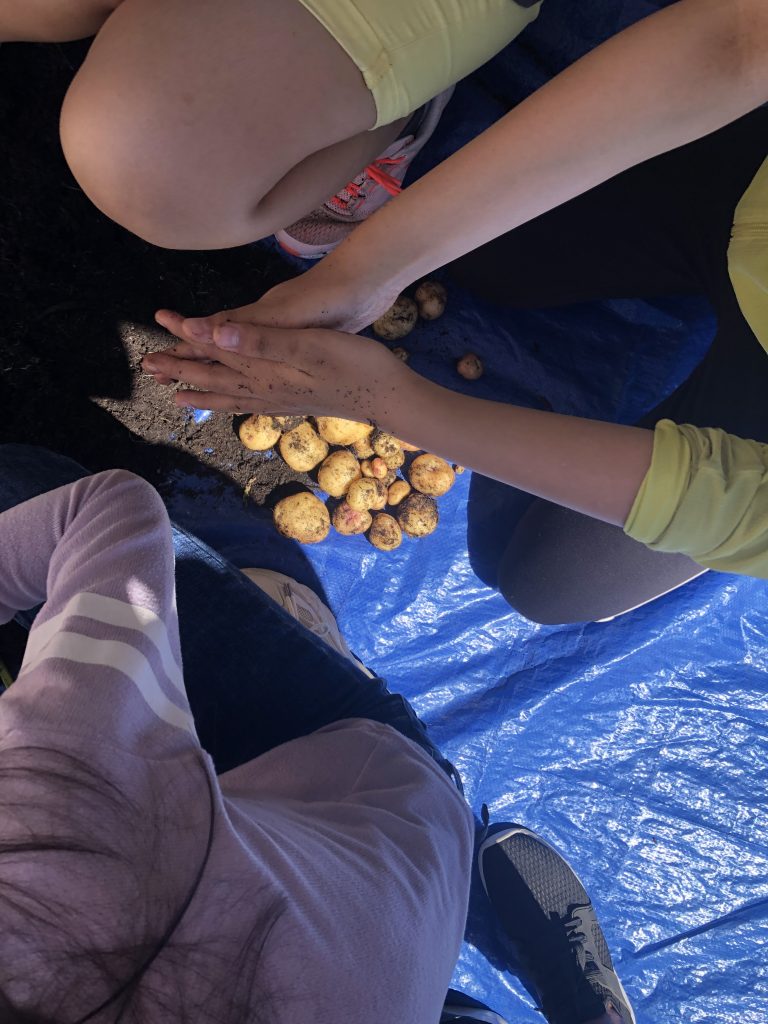
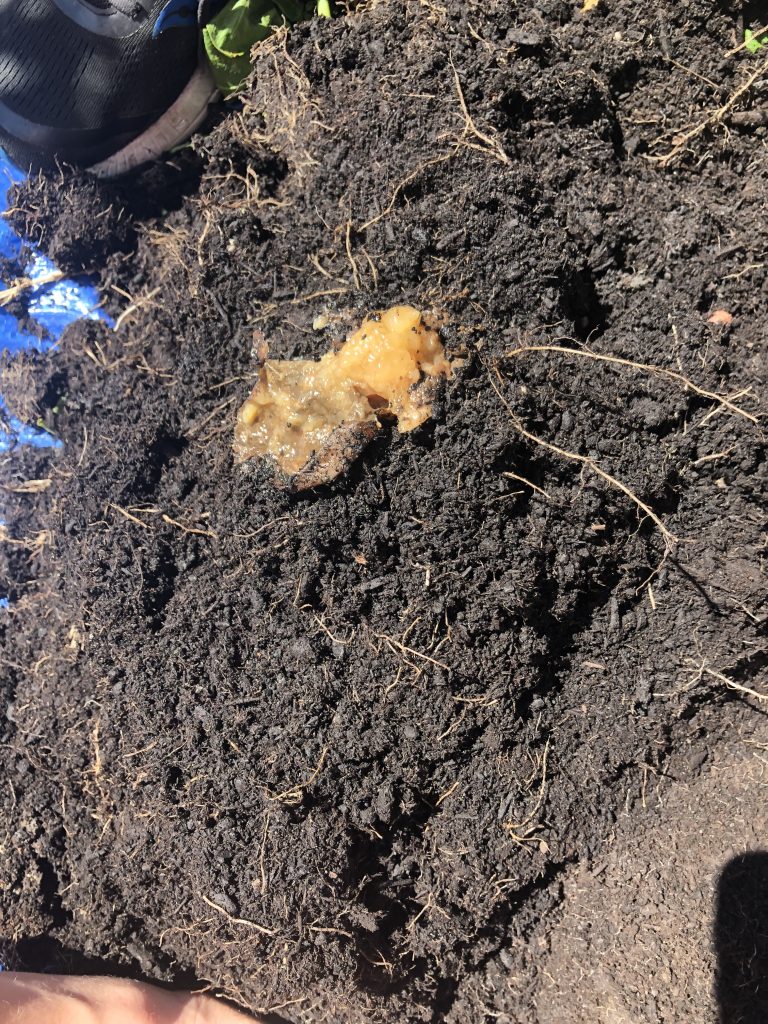
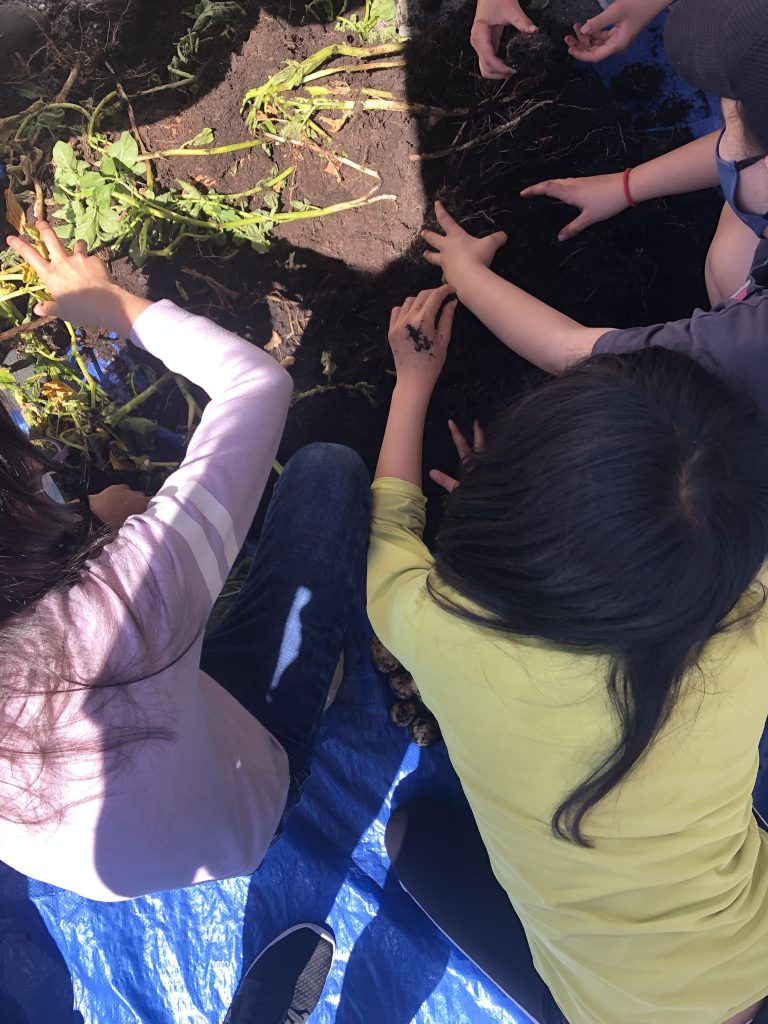
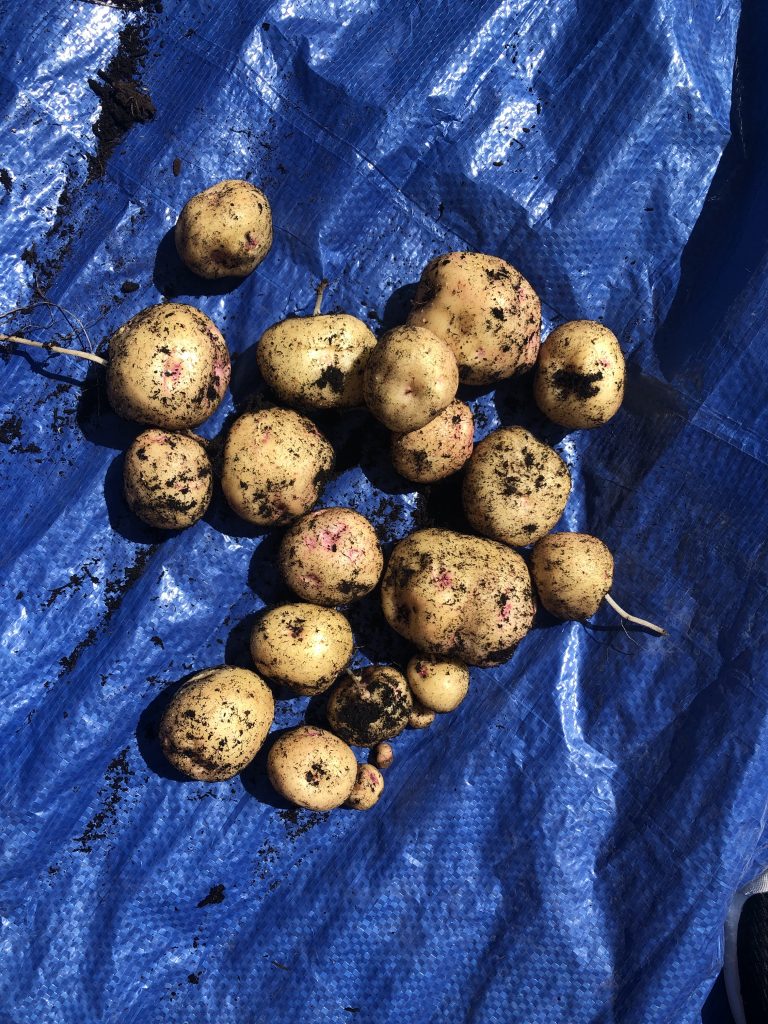
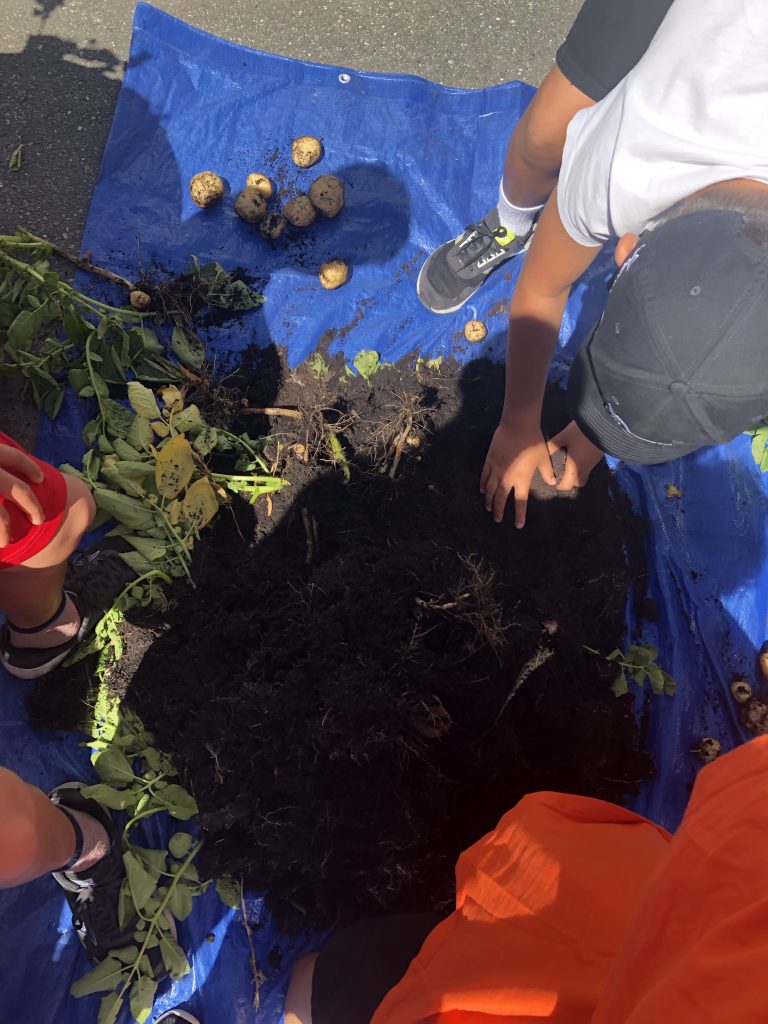
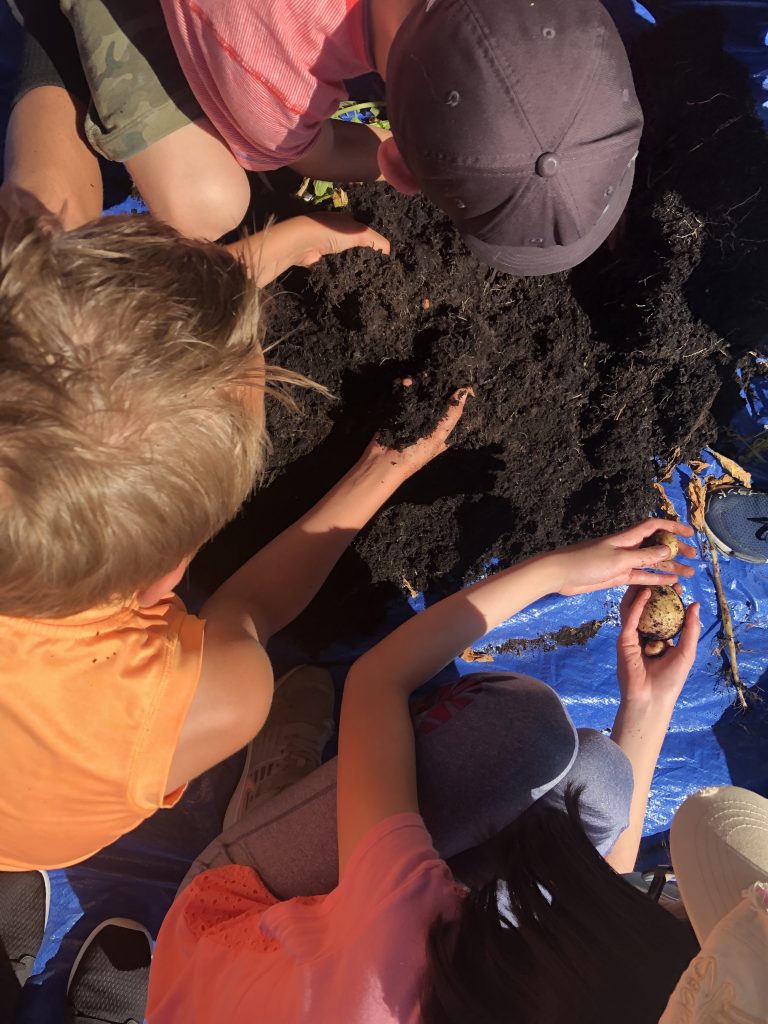
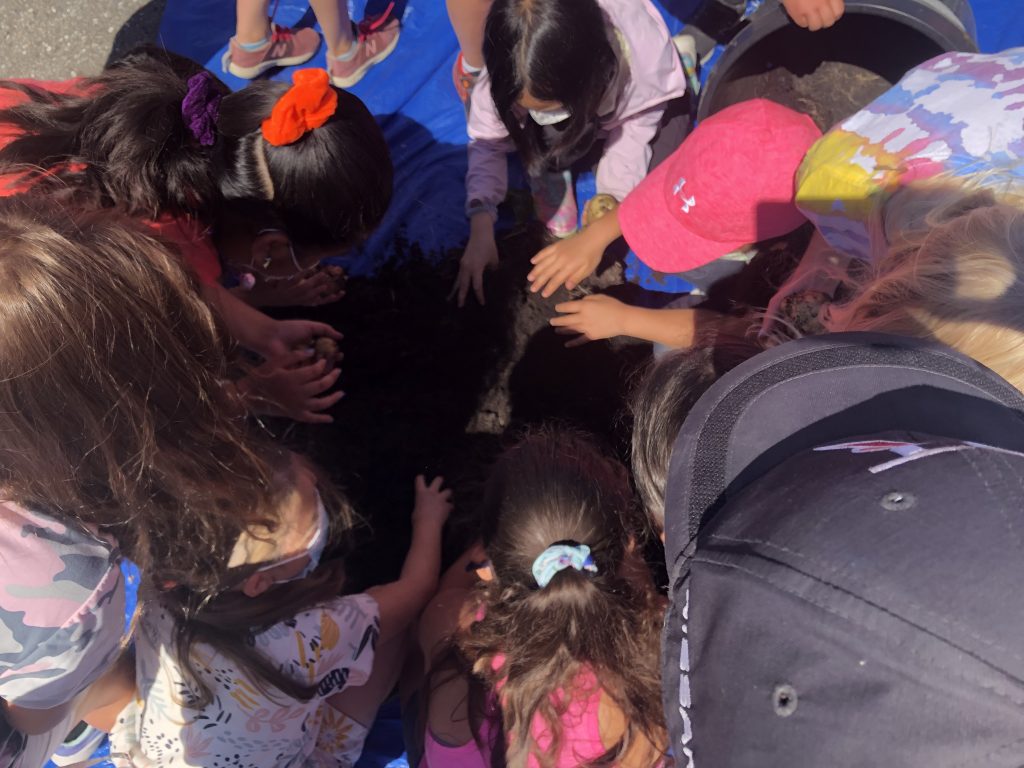
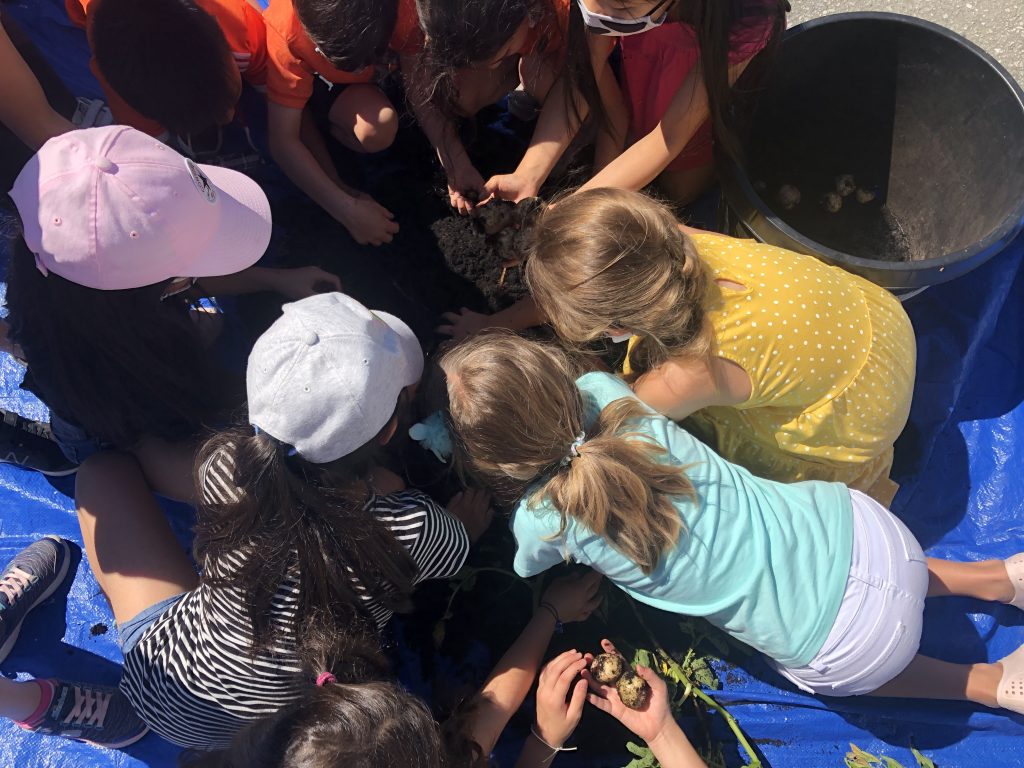
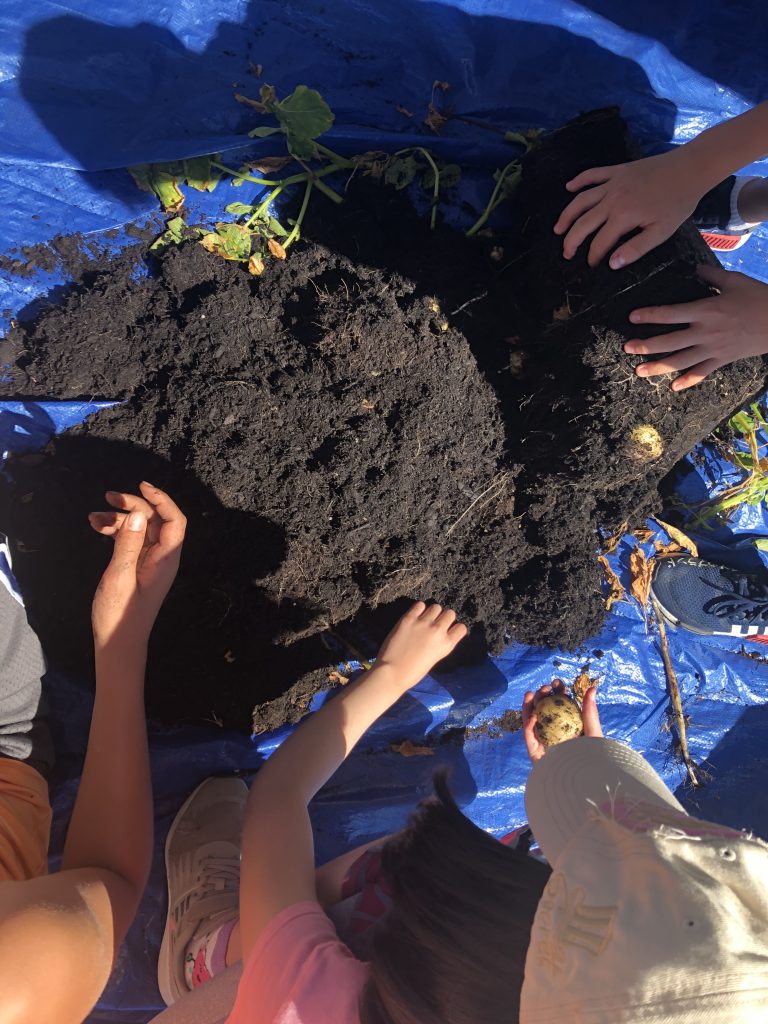 Today we harvested 298 potatoes with Division 9/11.
Today we harvested 298 potatoes with Division 9/11.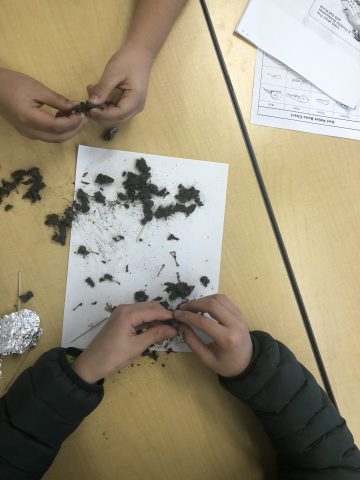
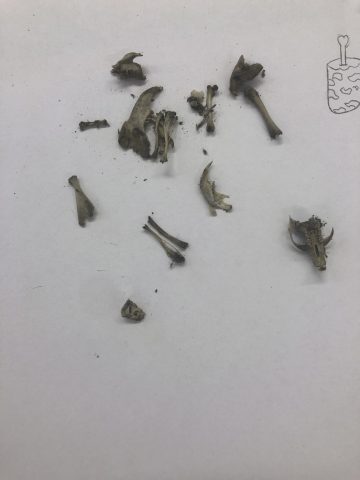
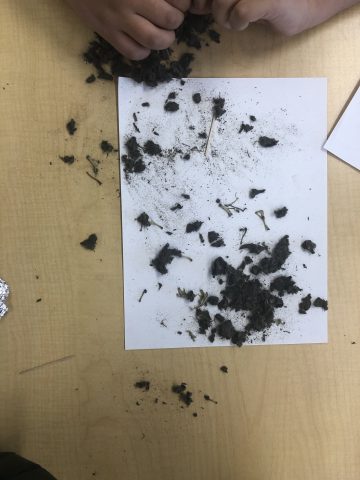
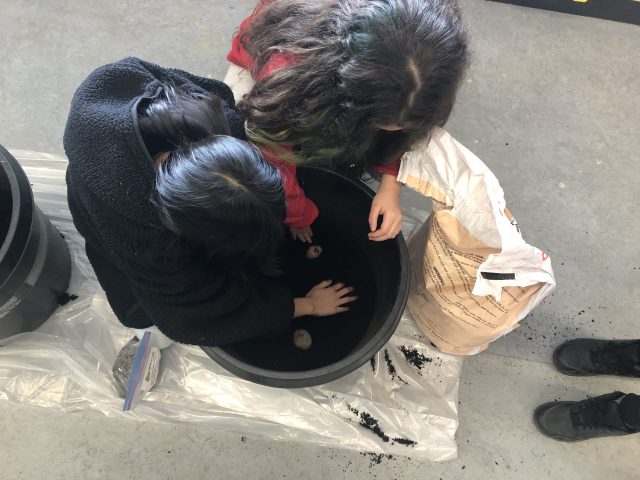
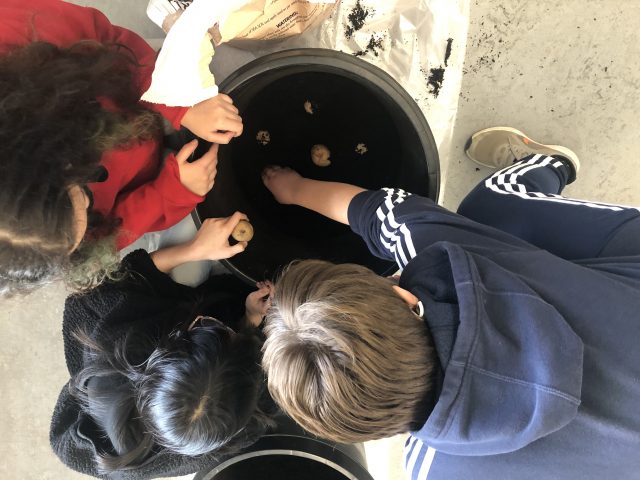
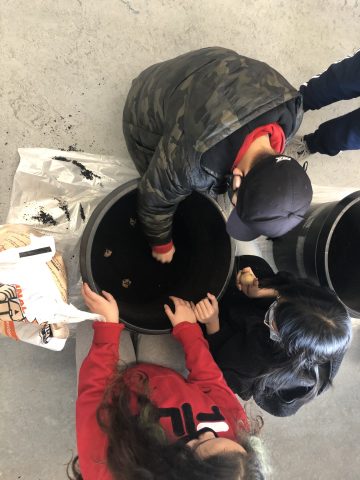
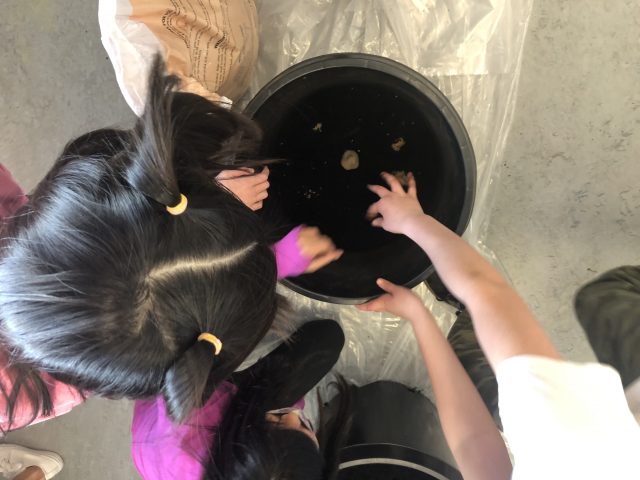
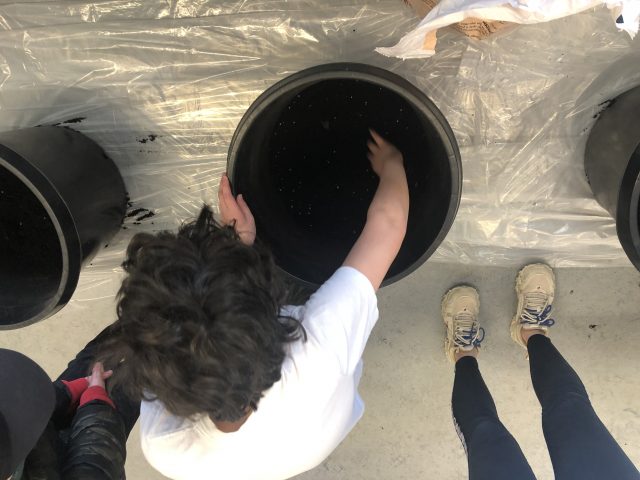 Today we planted our seed potatoes prior to spring break. We will harvest the potatoes in June. Our class predicts that we will grow approximately 100-320 potatoes.
Today we planted our seed potatoes prior to spring break. We will harvest the potatoes in June. Our class predicts that we will grow approximately 100-320 potatoes.